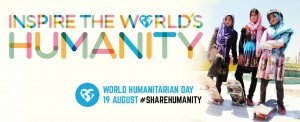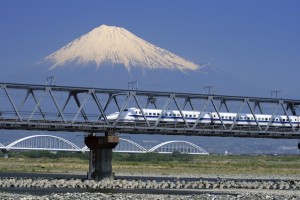This is a test.
Archive for August, 2015
This is a test
Thursday, August 20th, 2015Tomorrow is World Humanitarian Day
Tuesday, August 18th, 2015Tomorrow is World Humanitarian Day, designated by the United Nations as a day to honor those who provide life-saving assistance to others and those who have lost their lives in the cause of duty. The UN chose August 19 for this purpose, as it is the anniversary date of the 2003 Canal Hotel bombing in Baghdad where twenty-two people lost their lives including the UN’s High Commissioner for Human Rights and the Special Representative of the Secretary-General to Iraq Sergio Vieira de Mello. In recent years, the UN has used this date to draw attention to the humanitarian crises caused by natural disasters. The number of people directly affected by natural disasters has risen each year over the past decade, with about 211 million people directly affected last year. Hazards related to extreme weather present new and difficult challenges that demand more flexible solutions and adaptable humanitarian work. I will not be blogging tomorrow, but I wanted to draw attention to this day. Many businesses will acknowledge World Humanitarian Day on their social networking platforms (the hashtag is #SHAREHUMANITY) by recognizing a humanitarian who has made a difference in the world or committing to support specific humanitarian work.
This is a test
Monday, August 17th, 2015This is a test.
The Resilience of Baby Boomer Entrepreneurs
Sunday, August 16th, 2015Christiane Northrup M.D. has a new book for us to enjoy, Goddesses Never Age, and she delivered an engaging talk on public television about how to maintain vitality and radiant health with each passing year. Dr. Northrup’s information appeals to a wide audience, as even the youngest of the Baby Boom generation are eligible to join AARP. But as a member of Generation X, I had to pause and rewind the part where she quoted an opinion piece from Robert Love, editor-in-chief of the AARP Magazine:
“The Smart Money is on the 50+ Crowd…. We the people over the age of 50 are 100 million strong. We will soon control more than 70 per cent of the disposable income in this country. We buy two-thirds of all the new cars, half of all the computers and a third of all movie tickets. We spend $7 billion a year shopping online. Travel? More than 80 per cent of all the premium-travel dollars flow from our credit cards.”
Mr. Love’s piece laments the fact that advertisers focus their attention exclusively on the 18-to-49-year-olds, when in fact, the consumer purchasing power is disproportionately held by those over age fifty. It is a valid point, but I wish that Dr. Northrup had chosen another example. Those over age fifty are not just powerful as consumers, they are powerful as producers. A 2013 Gallup poll found that 73 per cent of Baby Boomers expect to continue working well past the age when they will become eligible to collect Social Security benefits: 41 per cent by choice and 32 per cent by economic necessity. Increasingly those boomers are starting their own businesses. The Ewing Marion Kauffman Foundation found that nearly one-quarter of those starting their first businesses are age 55 or older, a proportion that has nearly doubled over the past twenty years. For that reason, the AARP has partnered with the Kauffman Foundation to offer entrepreneurial training workshops for those age 50 and older starting their own businesses.
And that is why the largest advocacy group in the U.S. for those age 50 and older is no longer known as the “American Association of Retired Persons”, but as AARP, because many of the members are not retired. And that brings us back to the choices advertisers make. Their focus on the 18-to-49-year-old demographic does not result from a lack of appreciation of the spending power of the 50+ crowd. Rather, they focus their advertising efforts on younger adults because they believe older adults have already cemented brand loyalty and are less likely to change their purchasing preferences based on a snappy commercial. And that is where they are missing the point.
I notice this all the time when I speak at small business conferences. Invariably, people (okay, mostly women) come up to me with questions, like “What type of computer should I purchase for my business?” or “What are the best products for cyber-security so I can be sure my business information remains safe?” These people usually appear to me to be over the age of fifty and they are clearly open to brand suggestions, because they have no fixed preferences or brand loyalty. Notwithstanding their years of work experience, people who spent their entire careers in large companies working for someone else had purchasing decisions made for them for business use. The IT department decided which brand computer they would use at their place of work. The procurement department selects the corporate credit card, and so forth. The employees generally don’t know why these decisions were made or appreciate the selection criteria for purchases.
Once they leave their employers and start their own businesses, they need advice and guidance. The performance criteria for business and personal use computers are very different. The credit card you use for your personal spending is likely not the right choice for your business account. That is why I find so many people age fifty and over approaching me at small business conferences seeking product advice. I wish Dr. Northrup and AARP would use that example to illustrate why advertisers should pay attention to older people. The image of people over age fifty using their years of experience to bring their entrepreneurial dreams to life is a much more positive image of healthy aging than self-indulgent boomers overspending on credit cards. (And it also illustrates why we need to increase our focus on small business disaster resilience. Lack of preparedness is risky for any entrepreneur, but particularly those who have more to lose and less time to play catch up.)
This is a test
Saturday, August 15th, 2015This is a test.
This is a test
Friday, August 14th, 2015This is a test.
This is a test
Thursday, August 13th, 2015This is a test.
This is a test
Wednesday, August 12th, 2015This is a test.
Learning from Japan
Tuesday, August 11th, 2015I was interviewed for the “Marketplace” program of National Public Radio on the topic of business culture in Japan. As I had studied the Japanese language in college, I was delighted for each and every opportunity to travel to Japan on business and with Japan’s significant earthquake exposures, reinsurance companies, such as my former employer, are very active in that market. My reinsurance experience was beyond the scope of the NPR interview, which focused more on business etiquette and cultural differences, so I will take this opportunity to share a few things I learned about risk management in Japan.
Japan is recognized as a world leader in disaster risk reduction and hosted the United Nations Second (Hyogo, 2005) and Third (Sendai, 2015) World Conferences on Disaster Risk Reduction. Disaster risk reduction is embedded in Japanese policy. You notice that when you see the earthquake safety instructions, posted in English and Japanese, on your hotel room door. The country has extensive drills to prepare emergency responders, carefully planned evacuation and safety procedures and rigorous building codes for structures to withstand a certain amount of seismic activity.
While the UN thematic conferences are beginning to work on inclusive policies for persons with disabilities into disaster risk reduction and emergency planning, Japan began mainstreaming disaster risk reduction work into the needs of the disabled more than two decades ago. I first learned of the findings of Japanese researchers when, after 9-11, the Center for the Independence of the Disabled in New York, a local non-profit organization, published a report “Lessons Learned from the World Trade Center Disaster: Emergency Preparedness for People with Disabilities in New York.” That report referenced the findings of the experiences of disabled persons in Japan following the Kobe earthquake. We learned after 9-11 what the Japanese had learned much earlier: that social isolation is the main factor explaining bad outcomes for disabled persons when disaster strikes. To be inclusive, emergency planning must take into consideration the specific needs of evacuating people with limited physical mobility or other disabilities and consider their longer-term recovery needs, such as medical support.
Finally, Japan has much to teach us about gender issues in disaster risk reduction. Japan has a network to engage women in disaster preparedness activities an area that in the United States, tends to attract relatively few women. And they explicitly consider gender issues (such as, for example, the need for possible lactation facilities in evacuation centers) in emergency planning. I missed the opportunity to participate in the program in Sendai, Japan earlier this year, but look forward to my next trip and would like to start exchanges between Japanese and American small businesses as we have much to learn from one another.
This is a test
Monday, August 10th, 2015This is a test.


